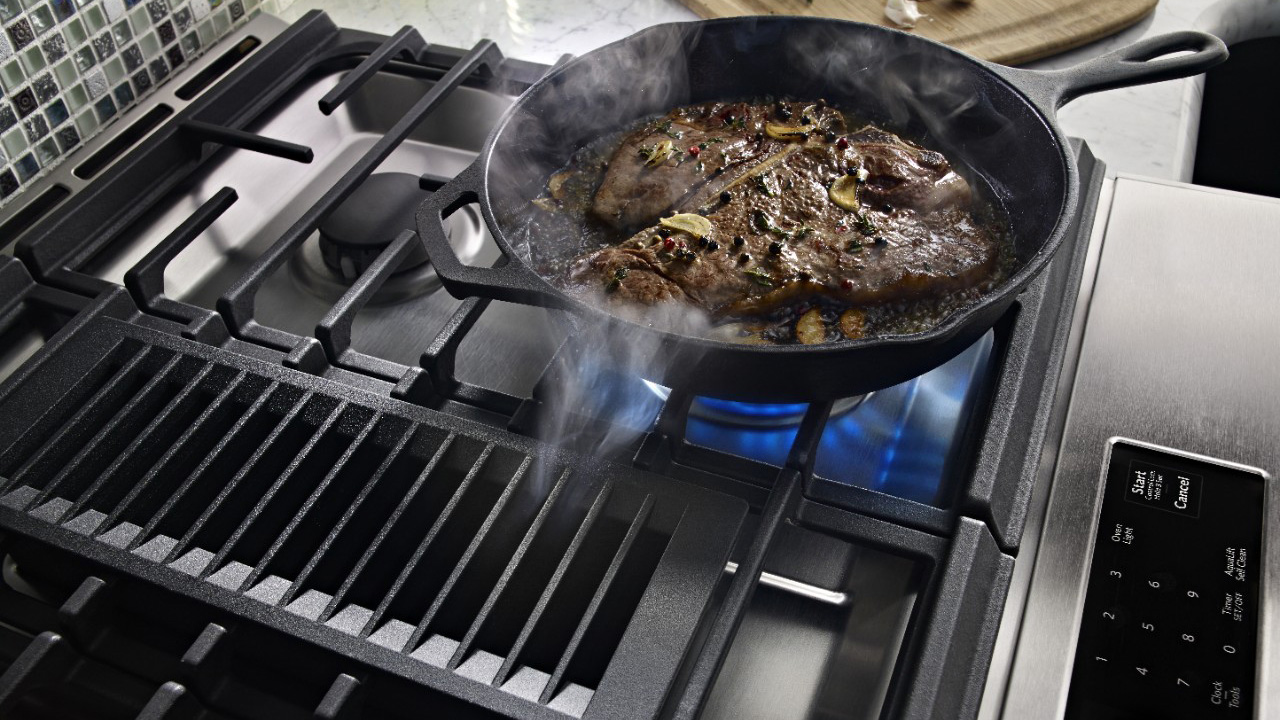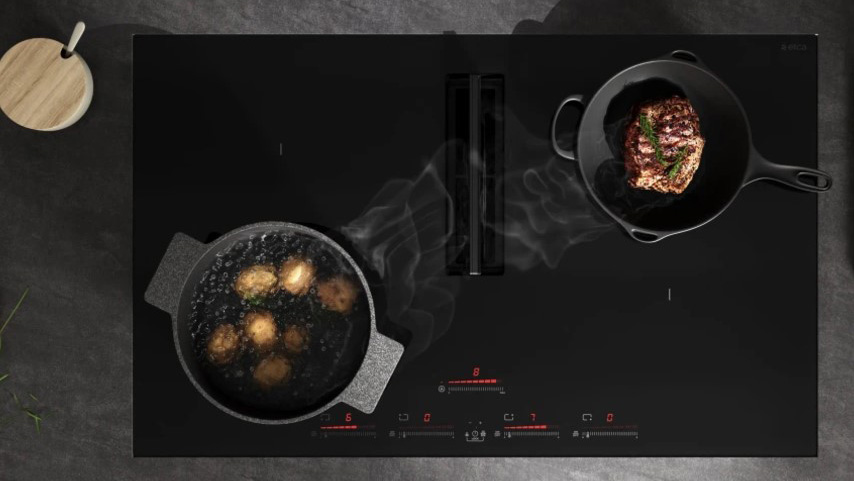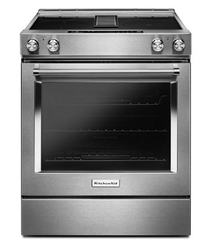What is a downdraft range — and do they really work?
Is a downdraft a good option?

Your kitchen sees a lot of action regarding food smells and splatters, and some cooking methods can produce smelly smoke, steam, and grease. An oven hood range helps remove these odors and steam from your kitchen, so you don’t have to live with that fish smell for several weeks. But they also take up a lot of real estate in your kitchen.
A downdraft range is a space-saving alternative that can vent smells and emissions from your kitchen just like a traditional gas range or electric range. But what is a downdraft range, and do they really work? We consulted some appliance experts to find out.
What is a downdraft range?

Traditional ovens require a range hood to vent away steam, grease, and odors while cooking on the stove. These range hoods are effective, but not all kitchens have the space to install one. That’s where downdraft ranges come in.
A downdraft range is a type of ventilation system integrated directly into the stovetop. When you cook on the stove, the downdraft range captures steam and other byproducts and pulls them downward. The steam and smoke are vented outside the home or filtered and returned to the kitchen.
“The downdraft vent is a great space-saver,” says Moniqueca Sims of SSG Appliance Academy. “It's well-suited for open kitchens and island installations, where overhead hoods might be impractical. That said, it's not as good as a hood at getting rid of strong smells or dealing with heavy smoke.”
However, if you don’t have the space for a traditional range hood, a downdraft range is a solid alternative that helps you keep your kitchen as odor-free as possible (even after cooking stinky foods like fish or garlic).
What is a downdraft cooktop, and are they different?

The name “downdraft cooktop” is often used interchangeably with “downdraft range,” but there is a slight difference between the two. A cooktop is a standalone appliance that lets you cook on a flat, even surface. A range combines a cooktop with an oven to provide more cooking options. Both appliances can use a downdraft venting system.
Sign up to get the BEST of Tom's Guide direct to your inbox.
Get instant access to breaking news, the hottest reviews, great deals and helpful tips.
If your kitchen is large enough, you might install the oven in one location and the cooktop in another. In that case, a downdraft range is the ideal way to vent fumes without installing a range hood.
Do downdraft ranges really work?
According to Andy Shu, appliance repair expert at ZapFixers, downdraft ranges “save space and offer a sleeker look since there’s no overhead hood.” This means they’re “ideal for kitchen islands or open-concept kitchens,” he says.
However, they are less effective than range hoods at capturing smoke and steam. Traditional oven hood ranges offer “superior ventilation and [are] more effective at removing odors, grease, and smoke,” Shu says.
Rocky Vuong founded Neatbrite, a cleaning company in Dallas, Texas. He has encountered numerous appliances in his line of work, including downdraft ranges. He recommends them for their “sleek design [with] no bulky hood” and says they are “good for kitchens with limited space.” However, he explains that they “may not be as powerful as a traditional hood [and] can be more expensive [and] require more frequent cleaning.”
This 30-inch KitchenAid electric slide-in range features a downdraft ventilation system within the centre of the cooktop. Smoke and odors can be removed outside or filtered air can be recirculated inside. It also features 4 elements, and a convection oven with a generous 6.4 cu ft capacity.
Should you buy a downdraft range?
Ultimately, deciding whether to buy a downdraft range or a traditional range hood depends on your needs and the space you have to work with. If you have a small or open-concept kitchen or have your range installed on the island, a downdraft range might be the better option. But if your kitchen is big enough and your range is installed next to the wall, you might prefer a traditional range hood. There are benefits and drawbacks to both options.
“The downdraft's closer proximity to the mid-level range of the cooking surface does make it more efficient at ventilating things happening right at the range,” says Sims. It also frees up more space in your kitchen for cabinets and can make the room seem less cluttered.
“It's noisier, though, [and] can only be installed with certain models of ranges that don't have too many BTUs and may not work great with induction cooktops,” Sims says. Induction cooktops are intended to be quieter than traditional cooktops, so adding a noisy downdraft range can ruin the ambiance of your kitchen.
More from Tom's Guide

Catherine Hiles has over a decade of experience writing and editing on various topics, including home improvement, personal finance, home finances, pet ownership, and parenting. Her work has been featured on BobVila.com, TIME Stamped, The Penny Hoarder, and more. In her spare time, Catherine enjoys running, reading, spending time with her kids and dogs, and tackling projects around the house.

